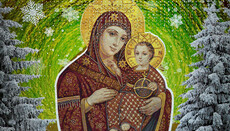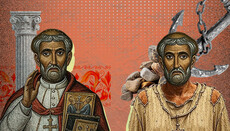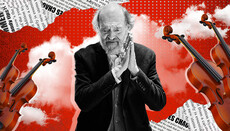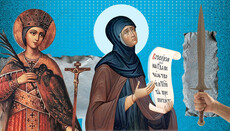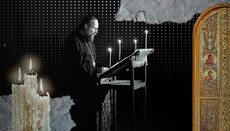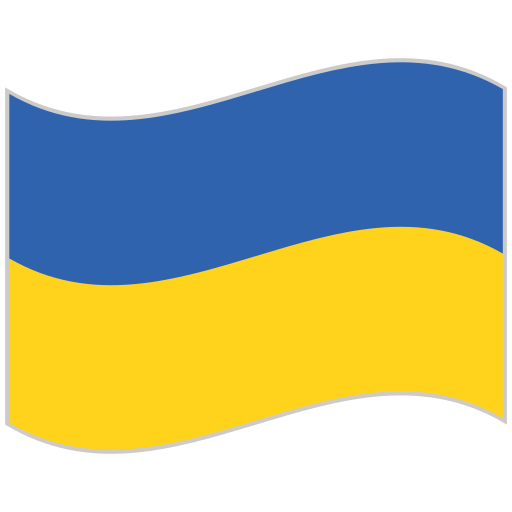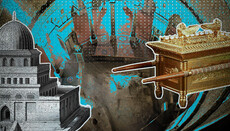The Queen of Heaven said, “I want to suffer!”
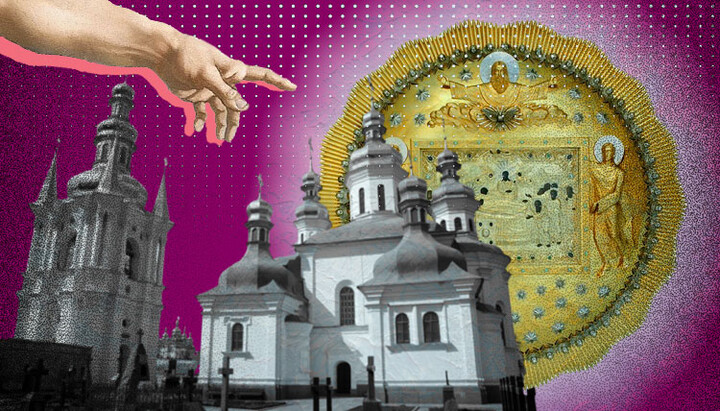
Testimony of the Holy Martyr Archpriest Sergius Sidorov (1885–1937) about the appearance of the Mother of God at the Kyiv-Pechersk Lavra.
This remarkable testimony of the appearance of the Queen of Heaven at the Kyiv-Pechersk Lavra in the early 1920s comes from Archpriest Sergius Sidorov, who was a spiritual disciple of the Optina Elder, Venerable Anatoly (Potapov), and a close associate of Patriarch Tikhon.
His father, Alexei Mikhailovich Sidorov, served as a lawyer and a member of the regional court board in Kharkiv. In 1919, he was executed by the Bolsheviks in Oryol as part of a group of hostages. Sergius’s paternal grandmother, Anastasia Nikolaevna Kavkasidze, came from an ancient princely family tracing its origins to the kings of Georgia. She was educated first in Moscow and later in Kyiv at the Institute for Noble Maidens.
Anastasia Nikolaevna passed away shortly after giving birth. The child was taken from Moscow and raised by his mother’s unmarried sister, Varvara Nikolaevna. The boy grew up in the Kavkasidze family estate in the village of Nikolaevka, Putivlsky Uyezd, Kursk Governorate (now Sumy region, Ukraine).
Sergey Alexeyevich graduated from the Popov Kyiv Gymnasium and then from the Moscow City People’s University named after A. L. Shanyavsky. In 1918, he enrolled in the Kyiv Theological Academy and managed to complete two courses. In 1920, he married Tatyana Petrovna Kandiba, from an old Ukrainian noble family. On September 21, 1921, the Feast of the Nativity of the Most Holy Theotokos, Sergey Alexeyevich was ordained as a priest at the Tithe Church in Kyiv on the patronal feast of this ancient temple.
This feast would become a defining moment in his life.
From 1921 to 1923, he began his service as a priest at the Church of the Nativity of the Theotokos in the village of Vita Poshtova near Kyiv (at that time, he was spiritually guided by Professor of the Kyiv Theological Academy, Archpriest Alexander Glagolev, who would later also become a holy martyr). The last church Father Sergius served as rector, near Murom, was also dedicated to the same feast of the Mother of God.
During his time in Moscow and later while serving in Sergiev Posad, his friend was Sergei Iosifovich Fudel, who would go on to become a well-known spiritual writer and confessor.
In 1919, Sergey Alexeyevich took a job at Poliru, the Department for the liquidation of religious utensils at the Kyiv Provincial Social Welfare Office. His duties included checking the list of Kyiv churches and cataloguing church property.
This work allowed him to become acquainted with remarkable members of the Kyiv clergy, to admire them, and in some cases, to become their friend.
His service at Poliru provided the opportunity to distribute vestments and sacred vessels to monasteries in need. At Sergey Alexeyevich’s suggestion, icons that had no historical value were transferred from the Kyiv-Pechersk Lavra to city and village churches. In the summer of 1919, he guarded the Lavra’s sacristy against raids by soldiers and spent long hours reading the Church Fathers, conversing with the fathers of the Lavra, and meeting with visiting clergy.
His spiritual daughter recorded one of her spiritual father’s recollections from that period, which almost literally mirrors events that unfolded a hundred years later—in our time… In April 1937, Father Sergius was arrested by the NKVD for “participation in an illegal church organisation”. He was executed at the Butovo firing range on September 27, on the Feast of the Exaltation of the Cross, together with Bishop Arsenius (Zhadanovsky) and other martyrs for the faith.
“Let’s go and place it back…”
The testimony of the appearance of the Queen of Heaven at the Lavra was published in the collection compiled by his daughter V. S. Bobrinskaya, “Notes of Priest Sergius Sidorov”, 1999.
“I was living at that time (in the early 1920s) at the Kyiv-Pechersk Lavra and was on friendly terms with its hegumen and treasurer. At that time, persecutions against the Orthodox Church were intensifying. One day, they asked me to help them remove and hide the miraculous icon of the Dormition of the Mother of God, which hung above the Royal Doors in the Dormition Cathedral of the Lavra.
They feared that in such turbulent times someone might desecrate the holy image or steal it.
The three of us removed the icon, replaced it with a copy, and quietly returned to our cells. Night fell. I went to bed, but sleep would not come. A sense of unease began to seize my soul. I turned from side to side, and finally, feeling I could bear it no longer, I went out into the Lavra courtyard. The night was moonlit and bright. I saw the father treasurer pacing the yard. “He can’t sleep either,” I thought, and approached him. He was glad to see me and said:
– How restless my soul feels, and I cannot understand why. I came out because in my cell, I felt completely bewildered. We are walking together, yet the unease inside me keeps growing. Suddenly, we see the door quietly open, and the hegumen coming out of his quarters.
– Look, he cannot sleep either, said the father treasurer.
And the hegumen, seeing us, quickly approached. In the moonlight, I could see that he was anxious—no, more than that – he was shaken by something.
– How fortunate that you are both here; I am сoming for you.
– What happened? – we asked in unison.
– Something terrible…, the hegumen backed up against the wall, breathing heavily. Just now, in a dream, the Queen of Heaven appeared to me and spoke so sternly: “I want to suffer.” Let us go and put the miraculous icon back in its place; this is Her will. Silently, moved and timid, we took the icon out of the hiding place and returned it to its place…”
The hegumen who saw the Queen of Heaven
The head of the Kyiv-Pechersk Lavra from December 23, 1917, to August 4, 1924, was Archimandrite Clement (Zheretienko), in schema Anthony (1865–1950). Since 1913, he was a steward of the Kyiv-Pechersk Lavra and a member of its Spiritual Council.
According to the legal advisor of the Kyiv-Pechersk Lavra, Professor Ivan Nikolaevich Nikodimov, Clement (Zheretienko) “was aligned with the far-left wing of the Lavra brotherhood. Monks with very radical views always gathered around him…”
After the February Revolution of 1917, he led the struggle against the Lavra’s administration. In April 1917, during an unauthorised meeting at the Refectory Church, the radical faction of the brotherhood elected him head of their committee. The group he led demanded the election of all officials by a general assembly, the removal of the hegumen Archimandrite Ambrose (Bulgakov), who had introduced a stricter ascetic approach to the Lavra's practices, the withdrawal of the monastery from under the authority of Metropolitan Vladimir (Bogoyavlensky) of Kyiv, and his expulsion from the Lavra.
After the establishment of the Ukrainian Central Rada's authority in Kyiv in the autumn of 1917, he joined the autocephalist movement. On December 1, 1917, at a meeting in the Lavra, he supported the demands of the autocephalists and their council (V.P.C.R.) for the expulsion of Metropolitan Vladimir from Kyiv and the proclamation of the autocephaly of the Ukrainian Church.
After the forced retirement of the elderly hegumen of the Lavra, Archimandrite Ambrose, on December 6, 1917, he was elected as abbot by the brotherhood. On December 28, he was granted temporary authority to perform the duties of the hegumen so that "without the knowledge of the Council and the permission of the higher Lavra authorities, he should not make any important decisions regarding the administration of the monastery, nor should he personally approve any brotherhood gatherings, general or private."
After the nationalisation of all the monastery buildings in July 1922, he took the position of manager of the Lavra buildings that had been allocated by the authorities to the 6th district of Kyiv. He also became a member of the church community "Kyiv-Pechersk Lavra", which was formed from the Lavra brotherhood and parishioners.
On August 4, 1924, the brotherhood elected him as the abbot, and Archimandrite Macarius (Velichko, later known as St. Kuksha of Odessa) was elected as the hegumen of the Lavra. On August 16, both were approved in their positions by Patriarch Tikhon. On October 25, 1924, he was detained by the Kyiv Provincial Department of the GPU of the Ukrainian SSR along with Archimandrite Macarius. Later, 28 other monks of the Lavra, 2 novices, and 4 members of the Lavra community were also arrested. The pretext for the arrests was reports to the GPU about the concealment of monastery valuables; from prison, he sent a written directive to hand them over.
The real reason for the arrest of the Kyiv-Pechersk Lavra leaders was their resistance to the Renovationist movement.
Taking advantage of the situation, in December 1924, the Renovationists registered their own community on the territory of the Lavra, to which the monastery churches were handed over.
On August 20, 1925, he was arrested again, along with Archimandrite Macarius and the treasurer, Archimandrite Anphim (Yelenetsky). In November 1925, they were released but were forcibly relocated to Kharkiv. He did not accept the "1927 Declaration" of the Patriarchal Locum Tenens, Metropolitan Sergius (Stragorodsky). Together with Archimandrite Macarius and Hegumen Eustratius, he signed a statement of non-submission to the Locum Tenens and was banned from the priesthood by Metropolitan Sergius. Over 30 Lavra monks supported his actions, recognizing him as their abbot. During the Divine Liturgy, he commemorated the Patriarchal Locum Tenens, Peter (Polyansky, the Hieromartyr), and joined the Josephite movement. He passed away on December 18, 1950, in Kharkiv at a very old age. His funeral was conducted in absentia by the Kyiv priest Vladimir Veselovsky. He was buried at the Zalyutinskoye Cemetery in Kharkiv, but his grave has not been preserved.”
"You do not have in mind the concerns of God”
The necessity has made us recall the names mentioned for the sake of history which, today, a century later, is repeating almost the same scenario and posing two questions before us: why did the Queen of Heaven appear at night to the Lavra abbot – Archimandrite Clement? And how should we understand Her words, "I want to suffer"?
It is quite clear that the Lavra leadership took measures to preserve the monastery’s relics. They did so out of a sense of responsibility imposed by their governing position. They wanted the Lavra to remain safe, and perhaps they themselves did not wish to suffer either.
Such a natural human desire – to avoid suffering – confuses the mind and makes it incapable of spiritual discernment. Let us recall the action of Peter, who, upon hearing from the Lord that He would soon have to suffer, took Him aside and began to protest. “But He turned and said to Peter, ‘Get behind Me, Satan! You are a stumbling block to Me; you do not have in mind the concerns of God, but merely human’.” (Matthew 16:23).
The Queen of Heaven is the Mistress of the Kyiv-Pechersk Lavra. With her own hands, She bestowed upon the monastery Her miraculous icon at the very beginning of its foundation, and the number of Her benefactions toward the Caves monastery cannot be counted.
Yet, She did all this not for the sake of increasing treasures, but for the glorification of the Name of Her Son among our people, for the preaching of faith and repentance, and for the salvation of human souls. The fruit and sign of these gifts is the Christian’s right attitude toward his cross.
It is impossible to follow Christ without a conscious and voluntary willingness to suffer. And if we lack this spiritual capacity, then outward Orthodoxy becomes, spiritually speaking, useless, and the preservation of holy things – terrible to say – becomes impossible. History bears witness to this. It may well be that, for the sake of restoring spiritual discernment, the Mother of God appeared to the abbot of the Lavra with the words: “I want to suffer.”
This appearance deeply shook Archimandrite Clement. After all the trials and extremes he endured, the Lavra steward, who had assumed the duties of the monastery’s superior, did not remain among the autocephalists; having suffered greatly, he ended his life in deep old age, tonsured into the Great Schema with the name of St. Anthony of the Caves. May this testimony of the appearance of the Queen of Heaven and Her admonishing words – “I want to suffer” – also serve for our benefit.
To be continued…
